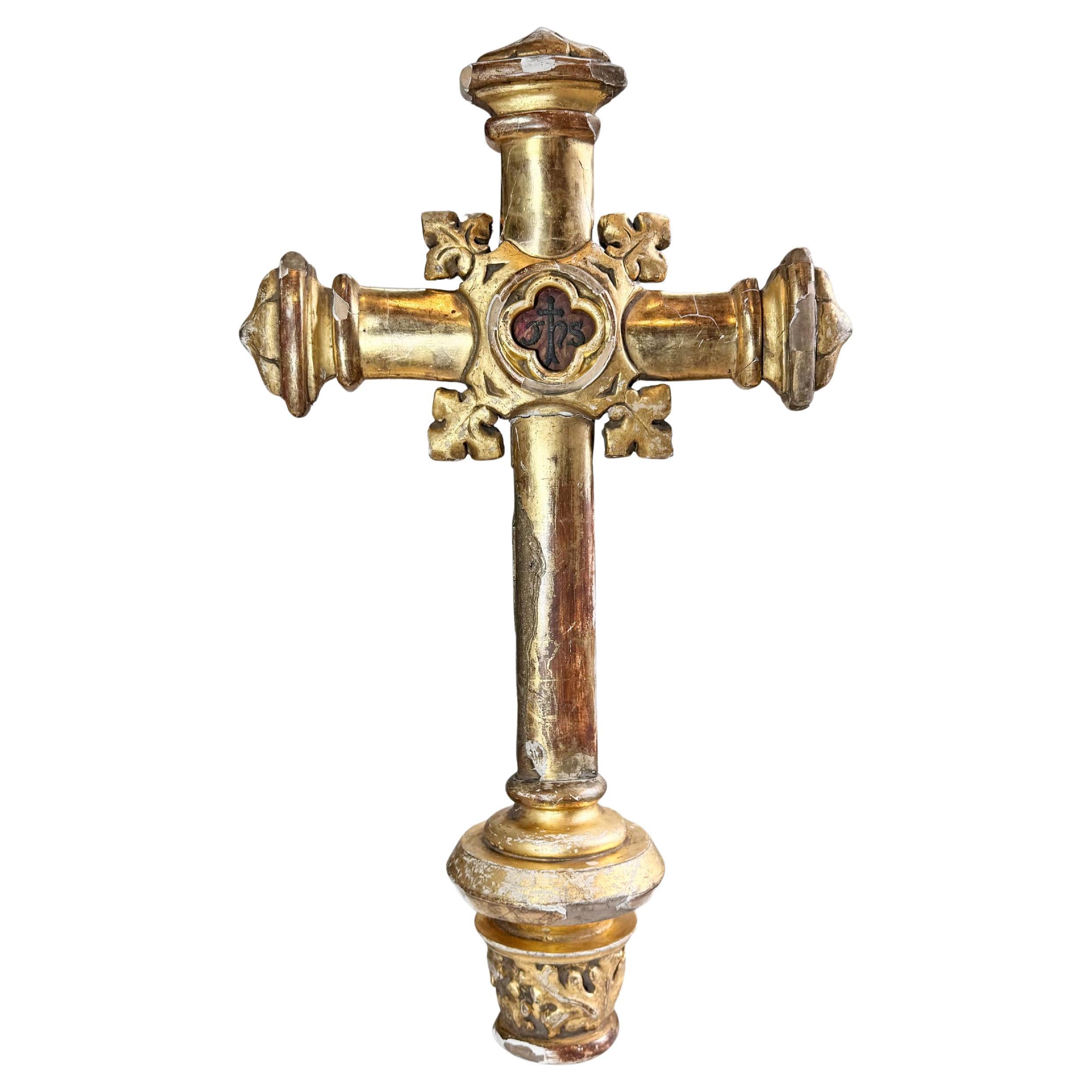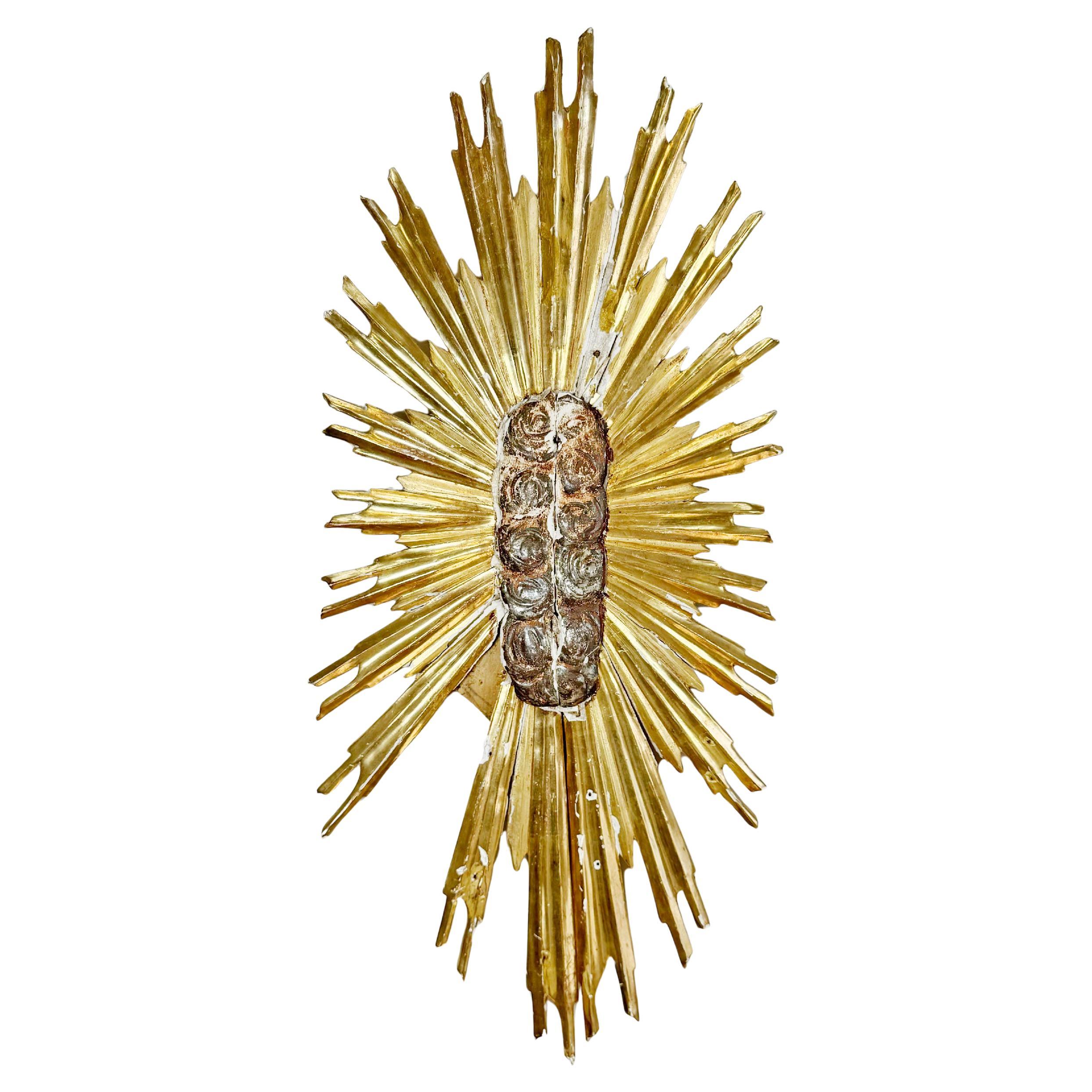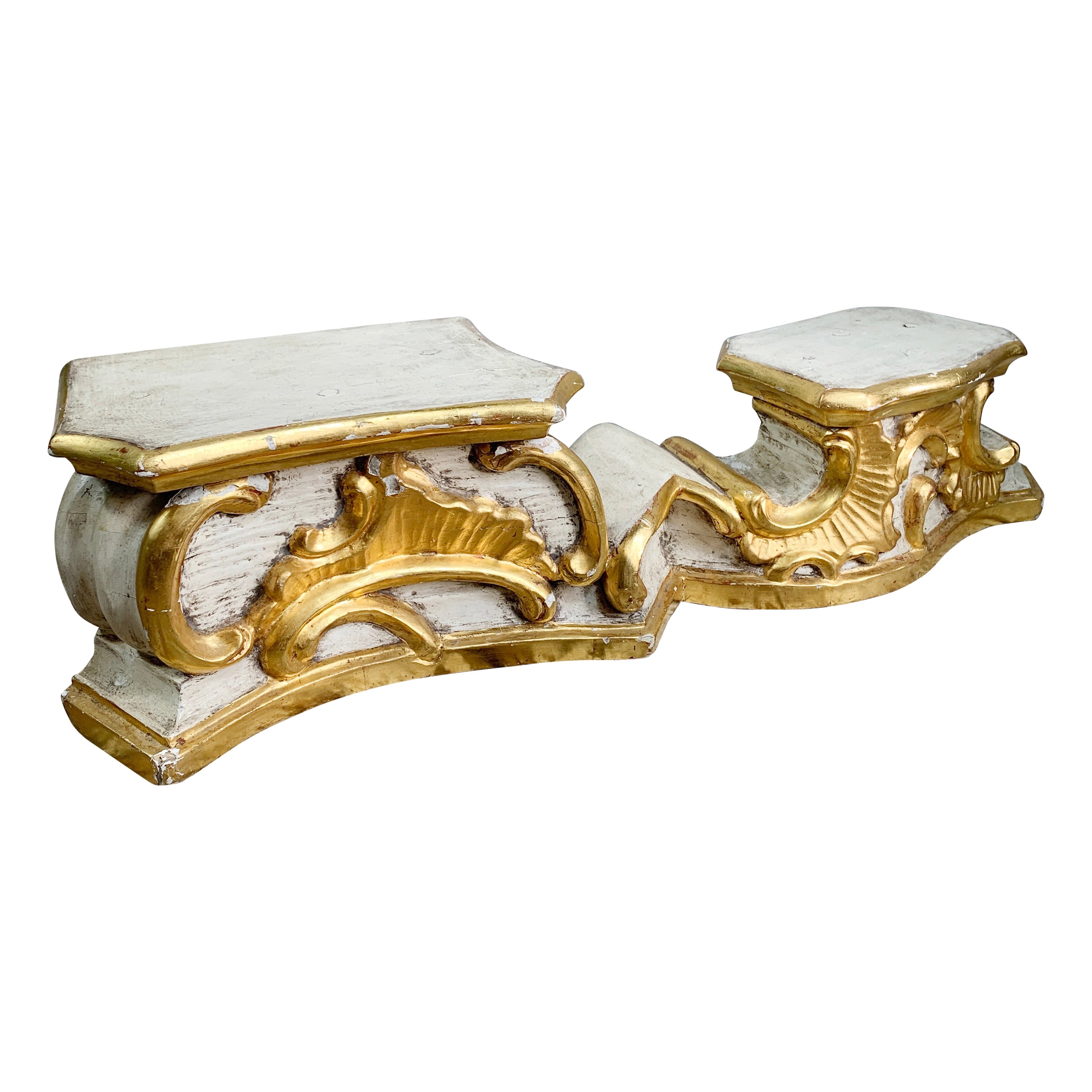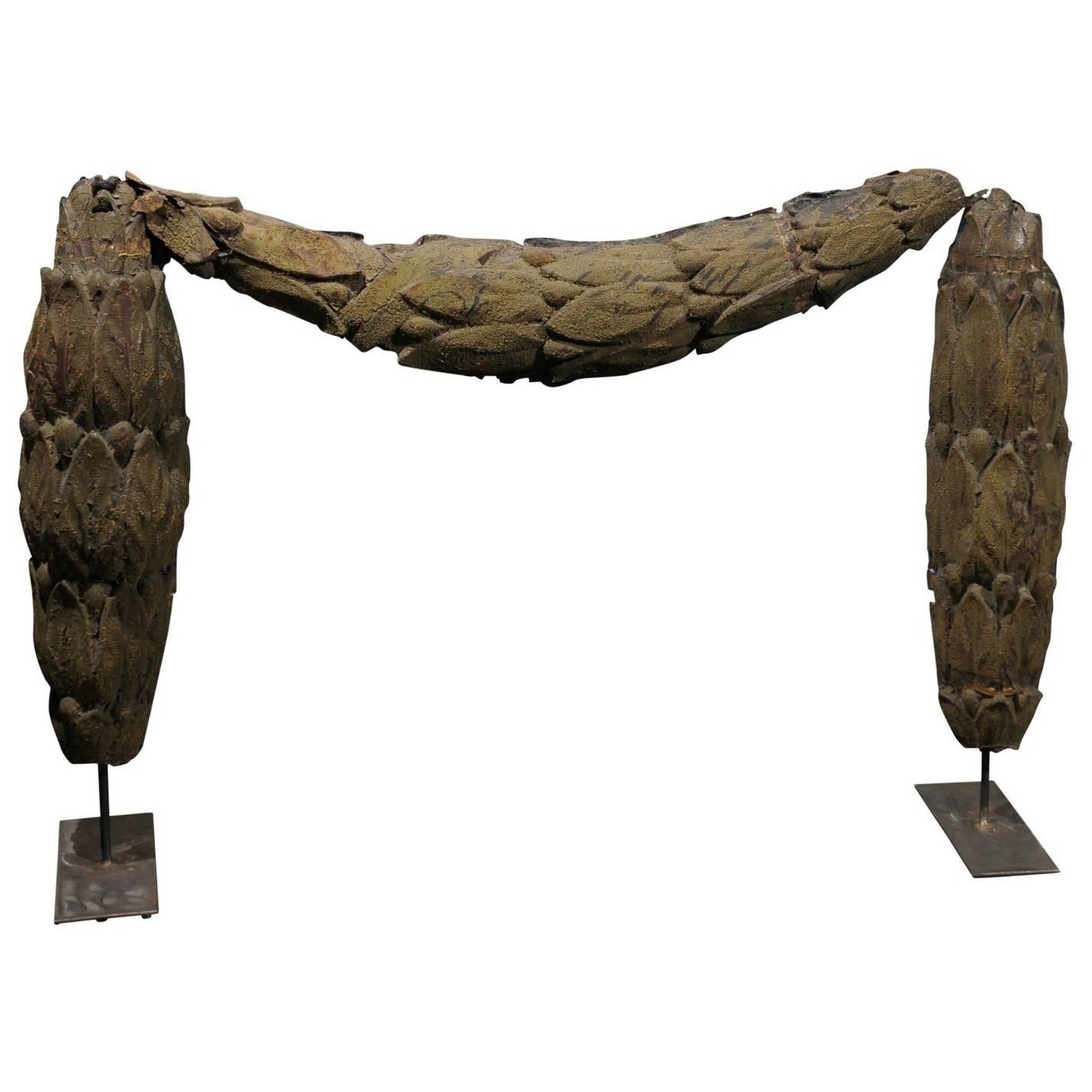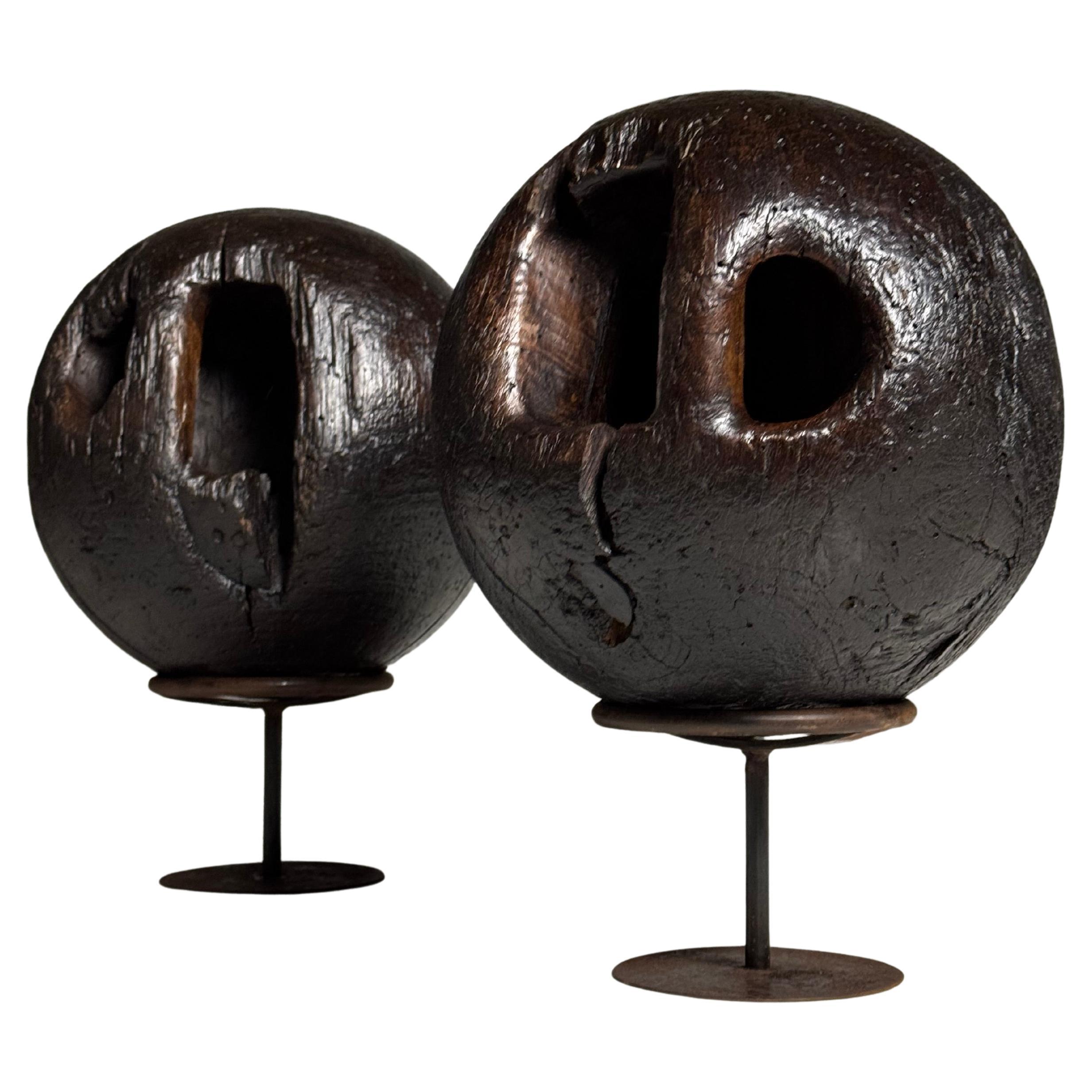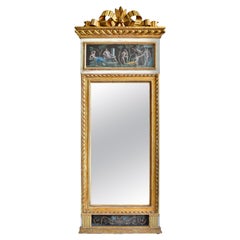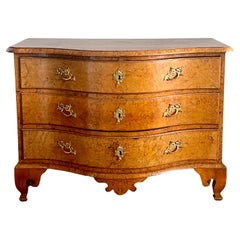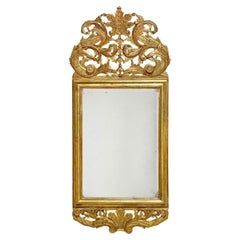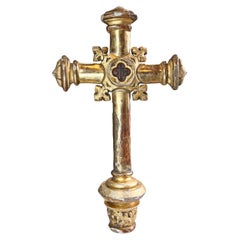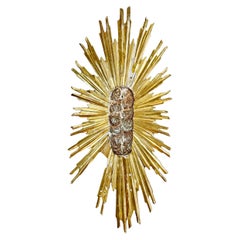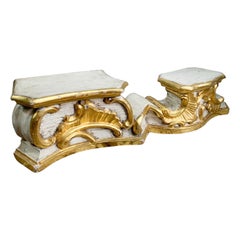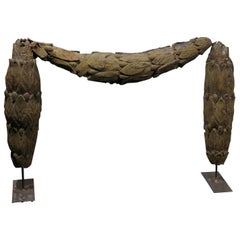Items Similar to Swedish Royal 18th Century Wash stand with Chinese Water Cistern.
Want more images or videos?
Request additional images or videos from the seller
1 of 15
Swedish Royal 18th Century Wash stand with Chinese Water Cistern.
$49,928.03per set
£36,983.44per set
€42,000per set
CA$68,960.20per set
A$76,966.86per set
CHF 40,317.34per set
MX$938,491.80per set
NOK 509,895.83per set
SEK 478,164.42per set
DKK 319,756.75per set
About the Item
A historically important 18th century piece of interior from the Swedish King Gustav III:s yacht Amphion built in 1777-1778. One of the last pieces in private hands to have survived from the famous ship.
The piece consists of a pilaster of solid mahogany, washstand carved in mahogany with three splayed legs with goat feet and rye ears in the fluting, (both pieces made by Pehr Ljung (1743-1819)), a Chinese half-round blue and white porcelain water cistern with lid topped by a fleur-de-lis, copper tap, Qianlong period (1736-1795).
Pilaster: H. 165cm, Width 47.5 cm.
Cistern: H. 54cm, Width 29 cm.
Washstand: H. 64.5,cm Width 59 cm.
Provenance:
(Possibly) Robert Herman Küsel (1819–1898), Duvnäs gård, Nacka, Managing director at Gustavsberg Porcelain Factory, warehouse manager at the old Royal Theatre, and office clerk at Stockholms Auktionsverk,
married to Emilia Augusta, née Lund (1844–1927);
their son, the artist Ernst Küsel (Nacka 1873–1942), married to Ingrid Margareta, née Ditzinger (b. 1881);
their son Nils Küsel (1905–1985), married to Maj, née Zetterlund (1919–2000), Sunnersta, Uppsala and Nacka, Uppsala;
thereafter inherited within the family until 2022.
Exhibited:
Kolka, Finland, Kymmenedalen Regional Museum, Gustav III:s tid – Svensksund, 28 June–16 September 1990, p. 72, no. 63, illustrated in color p. 56 as "Väggfontänen i Amphions salong" (The wall fountain in the saloon of Amphion)
Cf. Literature:
J. Af Sillén, En månad på Amphion. Minnen från sjötåget 1790 upptecknade af en deltagare, 1890
A. Wiberg, Dag-Bok hållen på Kongl. Galär Flottan åren 1789 och 1790 samt Fångenskapen i Ryssland, 1967
T. Lenk, Kungl. Skonerten ”Amphion”, in Land och Folk, vol. 1, 1938, pp. 1–16
G. Unger, Skeppsholmsbilder, 1946, p. 309 ff.
S. Fogelmarck, Amphion, konungens skonert, in Sjöhistorisk årsbok 1959–1960, 1960, pp. 70–94, and Statens Sjöhistoriska museum meddelanden X, 1961, pp. 1–27
D. G. Harris, Fredrik Henrik af Chapman: den förste skeppsbyggnadsarkitekten och hans verk, 1998
K. F. Liljeblad, Konserveringen & restaureringen av Amphion, 2007
On 22 July 1779, the secretary of the state lottery, who was also a Swedish songwriter, composer, musician, poet, and entertainer, Carl Mikael Bellman, at Drottningholm, recited a tribute poem to Queen Sofia Magdalena in connection with the solemn celebration of her name day:
Swedish original verse (Bellman):
Drottningholm din prackt förtjusar:
Alt en glättig känsla har;
Skyn är mörckblå, hög och klar;
Böljan glittrar, wädret susar,
Blomman rodnar frisk och swal.
Trädet skugg-rikt sig utsträcker,
Och med glesa löf betäcker
Göken, som i toppen gal
Morgon-Solen präktigt glimmar
Skogen dagas lång ifrån,
Och på wattnet Amphion
Med sin gyllne lyra simmar
Under trumslag, sång och skott
English translation:
Drottningholm, your splendor delights:
Everything holds a joyful feeling;
The sky is dark blue, lofty, and clear;
The wave sparkles, the breeze whispers,
The flower blushes fresh and cool.
The tree stretches out in shady breadth,
And with sparse leaves shelters
The cuckoo, calling from its top.
The morning sun splendidly gleams,
The forest dawns from afar,
And on the water Amphion
With its golden lyre glides,
Amid drums, song, and salutes.
The verses offer a glimpse of both a lovely summer day and the royal milieu. Several ships, among them the schooner Amphion, lay at anchor in the bay outside the palace, from which salutes were fired. Hedvig Elisabeth Charlotta of Holstein-Gottorp, Gustav III’s sister-in-law and later queen, recounts in her diary how, after the solemn court reception, they attended a comic opera at the theatre and continues:
Swedish original text from diary:
”Efter spektaklets slut gavs det supé och illumination, under vilken i synnerhet kungens utmärkt vackra fartyg ’Amfion’ visade sig i all sin glans. / Efter att ha tillräckligt hafva beundrat ’Herr Amfions’ alla behag, drog vi oss alla tillbaka, ganska uttröttade af dagens ansträngningar.”
English translation:
“After the performance there was a supper and illumination, during which in particular the king’s exceedingly beautiful vessel ‘Amfion’ displayed itself in all its splendor. / After sufficiently admiring all the charms of ‘Mr. Amfion,’ we all withdrew, quite exhausted by the day’s exertions.”
Amphion was built specifically for Gustav III and his consort and was his parade ship. The vessel lacked armament. The queen, like the king, had her own cabins adjoining the main saloon. The ship had lain for two summers off Drottningholm before Sofia Magdalena, in connection with her name day festivities, honored it with a visit.
The ship was built at the Djurgården shipyard between September 1777 and the summer of 1778, from drawings by Henrik af Chapman (1721–1808). In the War Archives (Krigsarkivet) is preserved a series of drawings by af Chapman that in detail describe the design of Amphion, as well as in the Maritime Museum (Sjöhistoriska museet) three drawings corresponding to these but executed with greater precision. There is also a watercolor that constitutes af Chapman’s first presented draft of the vessel, approved by Gustav III on 24 August 1777 and signed by af Chapman with the inscription:
Svenska original:
”Esquisse till et Turroma Fartyg för Hans Kongelige Mayestät at bruka på Mälaren”.
English translation:
“Sketch for a pleasure vessel for His Royal Majesty to use on Lake Mälaren.”
The ship is named after the Greek god Amphion, son of Zeus and king of Thebes, protector of culture. The figurehead represents Amphion playing his lyre. The name is probably taken from an opera-ballet of the same name, Amphion, which premiered on 16 January 1778 on King Gustav III’s birthday at the Great Bollhuset theatre. It was composed by the visiting Saxon court Kapellmeister Johan Gottlieb Naumann, with a libretto by Gudmund Göran Adlerbeth, based on the Frenchman Antoine Léonard Thomas’s opera-ballet Amphion from 1767, set to music by Jean Benjamin de Laborde.
In the first days of July 1779, Gustav III was in Karlskrona together with Prince Ferdinand of Brunswick-Lüneburg, brother of the Danish-Norwegian Queen Juliane Marie, and the Danish-Norwegian generalissimo Prince Ferdinand Karl of Brunswick-Bevern. They had previously attended a major Masonic meeting at Maltesholm in Skåne, and the king wished to take the opportunity to display to his royal guests what the naval base in Blekinge possessed in terms of military and maritime attractions. Among these was the king’s newly completed coastal vessel, Amphion.
Claes Julius Ekeblad, the well-known diarist, who belonged to the king’s suite, relates in a letter to his wife Britta Horn on 2 July 1778 about the ship (Fogelmarck, op. cit., p. 3):
Franska originalet (Ekeblads brev):
”Chapman a bati pour le conte du Roi un sorte de fregatte appelle Amphion de cette nouvelle construction, fait pour pouvoir aller dans le Melar, et même en mer en cas qu’il voulut aller en Russie encore une foi. / c’est un bijou pour l’ordonnance des appartements, puis qu’il y a tout un logement pour le Roi, un pour le Reine, pour des dames du palais et pour tout le monde, des dorures sans fin des peintures charmantes sur les lambris, bref on croirait etre dans le plus bel appartement a Stockholm.”
Svensk översättning:
”Chapman har för kungen byggt en sorts fregatt kallad Amphion av ny konstruktion, gjord för att kunna segla på Mälaren, och till och med till havet ifall han ville åka till Ryssland igen. / Det är en juvel för arrangemanget av kajutorna eftersom det finns ett helt boende för kungen, ett för drottningen, för damerna i slottet och för alla, oändliga förgyllningar och charmiga målningar på panelerna, kort sagt skulle man kunna tro du var i den vackraste lägenheten i Stockholm.”
English translation:
“Chapman has built for the king a kind of frigate called Amphion of new design, made to be able to sail on Lake Mälaren, and even at sea should he wish to travel to Russia again. / It is a jewel in the arrangement of the cabins, since there is an entire lodging for the King, one for the Queen, for the ladies of the court, and for everyone; endless gilding and charming paintings on the paneling, in short, one might think oneself in the finest apartment in Stockholm.”
On board Amphion’s deck, Gustav III gave a supper for his royal guests beneath a canopy. The general enthusiasm for the vessel was great, and the king decided, despite Chamberlain von Düben’s misgivings, to make the return journey to Stockholm by sea rather than, as officially planned, by carriage. On Thursday, 2 July, Amphion departed from Karlskrona on her maiden voyage under the command of Councillor Falkengren, admiral and president of the Admiralty College, together with a select suite of six noblemen of the realm. The lavish praise bestowed on Amphion’s interior and decoration found no counterpart when it came to assessing the vessel’s seaworthiness. The voyage to Stockholm presented several perils, and it became clear that Amphion was not suited for sailing on the open sea. She had, indeed, been designed by her builder primarily for use on Lake Mälaren.
But even for voyages on Lake Mälaren, Amphion proved, under unfavorable conditions, to be of limited seaworthiness. On 17 September 1779 Gustav III was to move from Drottningholm to Gripsholm and wished to make the 7-mile journey aboard Amphion. Storms and other adverse weather delayed the passage, and not until the evening of the 21st could the court, waiting at Gripsholm, discern Amphion’s sails in the distance. The king was rowed ashore in the royal barge Vasaorden, also designed by af Chapman, and declared himself entirely satisfied with having unexpectedly spent four days at sea. Hedvig Elisabeth Charlotta noted in her diary:
”Jag hoppas, att kungen för framtiden undviker detta verkliga farliga och obehagliga sätt att färdas, ty det kan lätt en vacker dag hända något olycka, så osäkert som hans fartyg Amphion är i synnerhet vid vissa vindar”.
English translation:
“I hope that the king in the future avoids this truly dangerous and unpleasant way of travelling, for one fine day some accident might easily occur, so uncertain is his vessel Amphion, especially in certain winds.”
Amphion is closely connected with Swedish naval war history. During the war against Russia, despite her poor sailing qualities, she came to serve as Gustav III’s staff vessel. On 22 July 1788 Gustav III boarded Amphion to travel to Finland. The bad experiences from earlier voyages repeated themselves, and Amphion was forced to lie at anchor, hindered by headwinds, just outside Stockholm. Hedvig Elisabeth Charlotta, in a letter to her husband Duke Charles, gave an account of this:
”Äntligen tycktes vinden idag [den 26 juni] ej vara lika motig för kungen som den hittills varit, den är åtminstonde litet gynnsammare; tills nu har de varit alldeles omöjligt för honom att komma fram, allra helst som han far på ’Amfion’, som visserligen är ett präktigt fartyg att se på, men som visar sig alltmer och mer odugligt. Vi tillbringade hela dagen i onsdags hos kungen, som han ovillkorligen ville komma framåt, befallde han, att man skulle ro, men det vara alldeles omöjligt, och tre gånger måste man kasta ankar; alla de små jakterna lovade förbi; men Amfion var ur stånd att komma ur fläcken, detta förargade kungen, som redan skickat alla galärerna till Helsingfors och själv befinner sig ombord på ett transportfartyg, vilken han dock lämnar så snart som möjligt för att gå ombord på ’Amphion’.”
English translation:
“Finally today [26 June] the wind seemed not to be as contrary for the king as it had been until now; it is at least a little more favorable. Until now it has been entirely impossible for him to make progress, especially as he travels on ‘Amfion’, which certainly is a magnificent vessel to look at, but which proves itself more and more unfit. We spent the whole of Wednesday with the king; as he absolutely wished to advance, he commanded that they should row, but it was altogether impossible, and three times they had to cast anchor. All the small yachts sailed past; but Amfion was unable to move at all. This irritated the king, who had already sent all the galleys ahead to Helsingfors and himself is aboard a transport ship, which he will leave as soon as possible to embark on 'Amadis'.”
Eventually Amphion made the crossing of the Baltic, and on 2 July she arrived in Helsingfors. The king, his suite, and crew numbered 150 men. During the Russian-Swedish War, Amphion followed the Swedish archipelago fleet. She served as office and residence for the king, his staff, and attendants, and undertook the short voyages to the sites of the more significant naval battles in the Finnish archipelago: Fredrikshamn, the Bay of Viborg, and both battles of Svensksund. At none of these occasions was Gustav III actually aboard; he travelled on the command galley Seraphimerorden when not ashore.
During the days of the Anjala conspiracy, Amphion lay moored off Kymmene gård. Gustav III resided on Amphion, and, to feel secure against the conspirators, had the gangways removed. The well-known council before the final Battle of Svensksund took place aboard Amphion, and it was in her great cabin that Gustav III announced his decision to attack — which resulted in the Swedish fleet’s greatest, most glorious, and most decisive victory. Daily work and audiences took place on Amphion. Promotions, honor swords, and decorations were also dispensed aboard. After the peace, on 17 August 1790, Gustav III bade farewell to his officers aboard Amphion. His return journey was made on 'Amadis'. Amphion returned from the war to the idyllic setting at Drottningholm, and on 7 August that same year Bellman could once again sing:
”Hvad höghet denna dagen
Kring Lof-Ö vackra holmar röjs
På Amphion utslagen
Den svenska flaggan höjs.”
English translation:
“What grandeur this day
Is revealed among the fair islets of Lovö;
On Amphion, unfurled,
The Swedish flag is raised.”
During the war, Amphion is frequently mentioned in the memoir literature, for example by J. A. Ehrenström, who belonged to the king’s daily entourage during the war with Russia (Historiska anteckningar, 1882).
What daily life was like aboard has been vividly portrayed by one who was there, Jan af Sillén. In his "En månad på Amphion". "Minnen från sjötåget 1790 upptecknade af en deltagare", first published in 1890, he recounts the uncomfortable and cramped conditions on a vessel intended essentially for coastal voyages.
After the Russian-Swedish War, Amphion seems mostly to have been kept hauled up at Skeppsholmen in a shed built for her in 1786. In 1829 she was refitted as flagship for the Admiral of the Fleet, Crown Prince Oscar (later Oscar I), who in August that year led exercises with a squadron of rowing vessels in the northern Stockholm archipelago. On this occasion, even King Karl XIV Johan and Queen Desideria are said to have gone aboard for a short excursion.
In the 1850s Amphion was downgraded and ceased to serve in active duty. In 1853 she was used as a quarantine vessel for cholera patients in Furusund. Two years later she was stripped of the epithet “royal.” In 1868 she was converted into a depot ship and stationed at various locations in the Stockholm archipelago. In this connection she underwent a radical rebuilding: the sides were raised to provide space for an upper enclosed deck structure. From 1875 she served as a barracks ship at the naval yard in Stockholm.
In 1886 her fate was definitively sealed by the decision to have her broken up. According to "Vår Flotta", July 1908, Karl XV had long before had the painted panels of the great cabin preserved. At the time of the breaking up, the stern, decorated cabin details, and the figurehead — the sculpted golden Amphion — were saved. In 1897 the stern was exhibited in the navy’s pavilion at the Stockholm Exhibition. When the Maritime Museum (Sjöhistoriska museet) was erected in 1938, the stern and Amphion’s great cabin were incorporated into the building. The figurehead, too, has been preserved and can still be seen in the museum.
For a long time, it remained unknown who was responsible for the decoration of Amphion—both the exterior ornamentation as well as the embellishment of the royal cabin. In 1956, Fil. kand. Herta Boman’s thesis on the court sculptor Per Ljung demonstrated that he was responsible for the most important parts of Amphion’s sculptural decoration: the figurehead and the stern. Stig Fogelmarck (op. cit., p. 8) argued that there were strong reasons to believe that the lavish interior of the royal cabin, including its furnishings, was also designed by Per Ljung.
Gustav III’s washstand from Amphion was exhibited in Finland in 1990 (op. cit.). At that time it had been overpainted in a gray color. This repainting must have taken place before 1897, as it is depicted in gray in a watercolor by the artist Ernst Küsel dated that year, showing an interior, (see photo). The interior is most likely taken either from his own home or from his parental home, Saltsjö-Duvnäs Manor in Nacka. The estate inventory after his father, Robert Herman Küsel, from 1898 records no object that can be connected to the washstand in question. The estate inventory after Ernst Küsel, 1943, lists a washstand in the Maid’s Chamber which could possibly be identical with the present washstand.
The Küsel family occupies a significant role in the history of the Swedish East India Company. An interest in seafaring and trade in East Indian goods was thus in their blood. It is therefore understandable that Gustav III’s washstand on Amphion, with its Chinese water cistern, appealed to members of the family. The Küsel family still owns an East Indian punch bowl bearing Karl Gottfrid Küsel’s coat of arms, which he commissioned in China (see photo).
Text to photo of painting with man sitting at a table with the Gustav III washstand against the wall:
The artist Ernst Küsel (Nacka 1873–1942 Nacka), Portrait of the artist Otto Alexis Holmström (Gothenburg 1866–1915 Stockholm), Interior from the artist’s parental home, Duvnäs Manor, Nacka, 1897 (Private collection).
Text to black and white photo with interior and Gustav III´s wash stand:
Nils and Maj Küsels home in Sunnersta, Uppsala, April 1946.
Text to Chinese punch bowl photo:
Chinese punch bowl with the coat of arms of Karl Gottfrid Küsel.
- Creator:Per Ljungs Art (Maker)
- Dimensions:Height: 64.97 in (165 cm)Width: 23.23 in (59 cm)Depth: 33.47 in (85 cm)
- Sold As:Set of 3
- Style:Gustavian (Of the Period)
- Materials and Techniques:
- Place of Origin:
- Period:1770-1779
- Date of Manufacture:1778
- Condition:Refinished. Repaired: The pilaster and stand have had a restoration back to original mahogany surface which at some point during the late 19th century had been painted grey. A non color glass plate has been made to create a top to the table where a basin once was placed. Wear consistent with age and use. Presently in a very nice condition considering its age.
- Seller Location:Stockholm, SE
- Reference Number:1stDibs: LU1006846304002
About the Seller
4.9
Recognized Seller
These prestigious sellers are industry leaders and represent the highest echelon for item quality and design.
Established in 1989
1stDibs seller since 2013
108 sales on 1stDibs
Typical response time: <1 hour
- ShippingRetrieving quote...Shipping from: Stockholm, Sweden
- Return Policy
Authenticity Guarantee
In the unlikely event there’s an issue with an item’s authenticity, contact us within 1 year for a full refund. DetailsMoney-Back Guarantee
If your item is not as described, is damaged in transit, or does not arrive, contact us within 7 days for a full refund. Details24-Hour Cancellation
You have a 24-hour grace period in which to reconsider your purchase, with no questions asked.Vetted Professional Sellers
Our world-class sellers must adhere to strict standards for service and quality, maintaining the integrity of our listings.Price-Match Guarantee
If you find that a seller listed the same item for a lower price elsewhere, we’ll match it.Trusted Global Delivery
Our best-in-class carrier network provides specialized shipping options worldwide, including custom delivery.More From This Seller
View AllGustavian 18th Century Giltwood Mirror with Gouaches
Located in Stockholm, SE
A fine gustavian gilt wood mirror with gouaches made in Stockholm c. 1790. Original gilding. The gouaches painted in the neoclassical pompeian style.
Category
Antique 1790s Swedish Gustavian Wall Mirrors
Materials
Mirror, Giltwood
18th Century Swedish Commode, Alder Root
Located in Stockholm, SE
A beautiful 18th century Swedish baroque chest of drawers, alder root. This late baroque commode is made around 1740-60. During the 18th and 19th century it...
Category
Antique Mid-18th Century Swedish Baroque Commodes and Chests of Drawers
Materials
Wood
Gustavian Mirror, Giltwood, 18th Century
By Johan åkerblad
Located in Stockholm, SE
Gustavian carved giltwood mirror made in Stockholm circa 1780. Attributed to Johan Åkerblad, (master 1758-1799).
Category
Antique 1780s Swedish Gustavian Wall Mirrors
Materials
Giltwood
18th Century Baroque Mirror
Located in Stockholm, SE
A beautiful possibly Swedish gilt wood baroque and original condition mirror of large proportions. The large mirror glass is original with faceted edges and has a beautiful color. Th...
Category
Antique 1710s Swedish Baroque Wall Mirrors
Materials
Mirror, Giltwood
$10,104
A wooden Eiffel Tower with a barometer and a thermometer, late 19th c.
Located in Stockholm, SE
A intricately crafted miniature wooden Eiffel Tower, designed to evoke the elegance of Parisian architecture while serving as a functional weather station. This piece combines fine c...
Category
Antique Late 19th Century French Historical Memorabilia
Materials
Wood
Pair of large North European 18th Century Rococo Armchairs, Mid 18th c.
Located in Stockholm, SE
A pair of silvered 18th century North European Rococo armchairs of grand size. Very comfortable and in perfect condition.
In the 18th c it became a fas...
Category
Antique 18th Century German Rococo Armchairs
Materials
Wood
$5,254 Sale Price / set
28% Off
You May Also Like
18th Century Water Gilded Processional Cross with Embroidered IHS
Located in Hastings, GB
Glorious 18th century water gilded baroque processional cross, with embroidered IHS panels inset.
Time worn patina, gesso over wood.
Height 61 cm, Width 37 cm, Depth 13 cm
Category
Antique Mid-18th Century Italian Baroque Religious Items
Materials
Gesso, Wood
18Th Century Water Gilded Sunburst Around Clouds
Located in Hastings, GB
An incredible and very rare late 18th century Italian water gilded sunburst, with a formation of clouds surrounded by sunrays, in beautiful time worn condition, one ray has been lost...
Category
Antique Late 18th Century Italian Baroque Religious Items
Materials
Pine
18th Century White and Gold Baroque Stand
Located in Hastings, GB
A superb baroque stand, crafted from wood (possibly Oak) with painted design in gilt, dating to the 18th century, German, these would originally have displayed the statues of the sai...
Category
Antique 1760s German Baroque Pedestals and Columns
Materials
Wood
A Large Swedish 18th C. Tole Swag Architectural Element Mounted on Metal Stand
Located in Atlanta, GA
A Swedish 18th century large tole architectural swag mounted on an iron stand. This antique swag came from a building in Sweden. This unique piece consists of a rich foliage motif that appears to be draping on its stand. The general color of this unique piece is a moss-green tone. With its classical elegance, this 18th century Swedish architectural...
Category
Antique 18th Century Swedish Neoclassical Mounted Objects
Materials
Metal, Tôle
18th Century Spanish Silver Holy Water Font, Baroque Style with Gilt Virgin Mary
Located in Madrid, ES
This highly decorative silver holy water font or stoup, is stamped with hallmarks placing its manufacture in Aspiazu, Bilbao, Spain during the l...
Category
Antique Late 18th Century Spanish Baroque Religious Items
Materials
Silver
18th Century Italian Hand-Carved Polychrome GIlt Holy Water Font
Located in Milano, MI
From Italy, Marche central region, a polychrome carved holy water font mid-18th century, a shaped panel with carved and gilt scrolls and acanthus leaf details. A green edge decoratio...
Category
Antique Mid-18th Century Italian Rococo Decorative Art
Materials
Poplar
